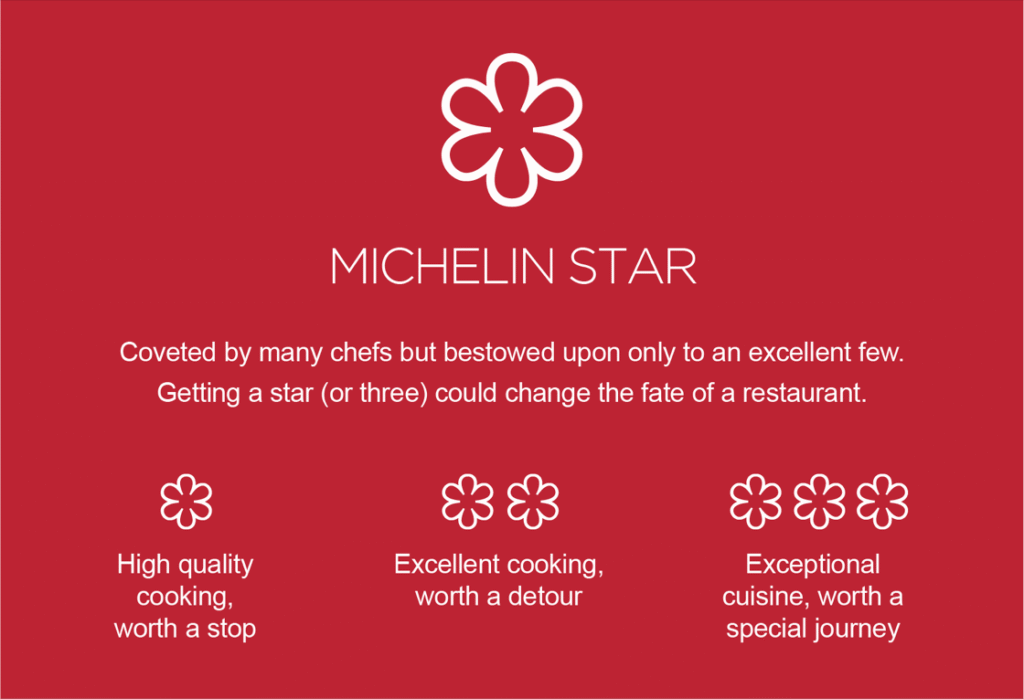
A bit of history
The MICHELIN Guide adventure began in 1900 with brothers André and Edouard Michelin, founders of the tire company that bears their name. At the time, the Guide was a book of some 400 pages with practical, tourist and advertising information that was distributed free of charge to motorists. Its intention was to help them to travel and to promote what we now call mobility.

In the 1923 guide, the heading “Recommended Hotels and Restaurants” appeared. It was the first time that independent restaurants were cited and aware of the growing interest in the restaurant section of the guide, the Michelin brothers recruited a team of mystery diners, who are known today as “inspectors”, to anonymously visit and evaluate the restaurants.
In 1926, the guide began to rate the quality of restaurant establishments with stars, although initially only one star was awarded. Five years later, the hierarchy of one, two and three stars was established, and in 1936 the criteria applied for the awarding of these stars were published.
Today, the MICHELIN Guide has become a world reference in the field of gastronomy, thanks to its constant commitment to its readers and its rigorous selection process, which is applied worldwide in an independent manner.
MICHELIN Star
👉 Any restaurant, of any style and type of cuisine, is eligible for the Stars.
To carry out the selection of the restaurants to be awarded, MICHELIN relies on a group of anonymous inspectors, men and women who will go to the restaurants several times at different times, on different days. They must be sure that everything that comes out of the kitchen meets, time and time again, a high standard of quality.
All the inspectors travel the world to eat in the countries where the MICHELIN Guide is currently published. This ensures that they all apply the same criteria to judge by the same benchmarks: a MICHELIN Star must mean the same thing and have the same value wherever in the world the restaurant is located.
🚨Stars are not awarded to a specific chef, but to a restaurant as a whole: good cuisine is always the result of teamwork.
It is important to mention that the evaluation does not include the decoration or style of the restaurant, you can find Star restaurants in all styles, including some Asian street food places.
Criteria for the assignment of MICHELIN Stars

The MICHELIN Guide also awards 2 other prizes:


BIB Gourmand: This is the recognition of good value for money and highlights simple but skillful cuisine at an affordable price. In these restaurants, gourmets can enjoy very good cuisine at moderate prices. The Bib Gourmand restaurants are all in a price range between € and €, i.e. they are in the categories “Without skimping” or “Treat yourself”.
The Green Star: This is the most recent award. It was introduced in the MICHELIN Guide France in 2020 and now appears in all countries covered by it. It is awarded to restaurants that are a role model in terms of sustainable gastronomy.
Highlighting Your Incentive Program
One of the key elements of a successful incentive program is delivering a memorable “wow” factor that resonates long after the event. Incorporating MICHELIN-starred dining experiences is a powerful way to achieve this. We highly recommend exploring the MICHELIN Guide for the destination city and selecting one or more of its acclaimed restaurants to include in your program. These culinary experiences not only delight the senses but also elevate the perceived value of your event—turning a corporate dinner into a signature moment.
The official MICHELIN Guide website offers curated recommendations for restaurants and hotels, helping planners design high-impact travel experiences that leave a lasting impression. For incentive travel, few things match the prestige and refinement of world-class gastronomy.



